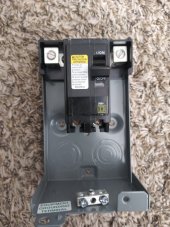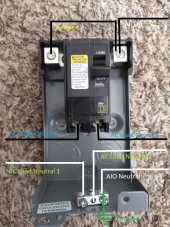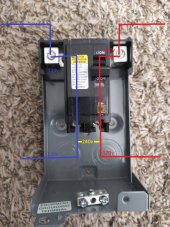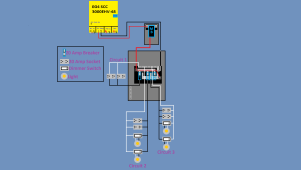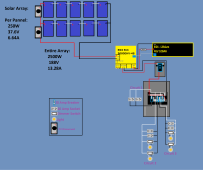Hello All,
First, if my questions have already been discussed somewhere else, any links would be appreciated, I believe I have exhausted most resources (if not just having exhausted myself ).
).
I have en EG4 3000 EHV-48 Solar Inverter/Charger. I have about 2500w worth of panels. At this time I have 1 Lifepower4 51.2V100A Batteries. The system I am building is 100% off grid and never will be on grid. Any further expansion could include more panels, another battery or 2, and more circuits, thats about it.
I am in the stage of my research of now considering the AV output and distribution system. In the manual for this SCC it suggests a 30amp breaker for the AC out, and provides 120V. (At this time i doubt ill add another SCC for split phase 240v, but if I ever did id consider all of that at a further date).
I have a few questions that have come up regarding this seemingly uncommon setup. 120v Load Center wiring direct from a SCC. I have scoured videos for a while but just cant seem to find something that directly represents my situation.
1. Neutral Ground: I have read a few threads regarding this but dont quite understand the full idea with grounding and possible neutral bond in a setup like mine. Hell I dont even understand where I might need to connect to rod that i pound into the ground or if that is on the agenda at all! If anyone is so kind to explain (or provide links) to understand the topology of this concept.
2. LoadCenter: I have a Square D 6 circuit homeline load center (HOM612L100RB). Sense I am only getting 120V out from the SCC, it seems these load centers will only have half of the circuits energized. Id like to make use of the whole load center and have seen the option of running a jumper from the connected Load bus to the other bus. Is this a horrible idea? When ive heard it mentioned, people seem to mince words about it. Is it a better idea to have an external bus bar inbetween my SCC AC output and two "loads" from the bus to each of the separate circuits on the load center?
Here is a video of pretty much the same loadcenter that I have but is being used slightly differently by Will:
Id like to use the same load center powered by my 120v output SCC mentioned above.
Thanks in advanced, I am working on a diagram just in case it helps explain things.
First, if my questions have already been discussed somewhere else, any links would be appreciated, I believe I have exhausted most resources (if not just having exhausted myself
I have en EG4 3000 EHV-48 Solar Inverter/Charger. I have about 2500w worth of panels. At this time I have 1 Lifepower4 51.2V100A Batteries. The system I am building is 100% off grid and never will be on grid. Any further expansion could include more panels, another battery or 2, and more circuits, thats about it.
I am in the stage of my research of now considering the AV output and distribution system. In the manual for this SCC it suggests a 30amp breaker for the AC out, and provides 120V. (At this time i doubt ill add another SCC for split phase 240v, but if I ever did id consider all of that at a further date).
I have a few questions that have come up regarding this seemingly uncommon setup. 120v Load Center wiring direct from a SCC. I have scoured videos for a while but just cant seem to find something that directly represents my situation.
1. Neutral Ground: I have read a few threads regarding this but dont quite understand the full idea with grounding and possible neutral bond in a setup like mine. Hell I dont even understand where I might need to connect to rod that i pound into the ground or if that is on the agenda at all! If anyone is so kind to explain (or provide links) to understand the topology of this concept.
2. LoadCenter: I have a Square D 6 circuit homeline load center (HOM612L100RB). Sense I am only getting 120V out from the SCC, it seems these load centers will only have half of the circuits energized. Id like to make use of the whole load center and have seen the option of running a jumper from the connected Load bus to the other bus. Is this a horrible idea? When ive heard it mentioned, people seem to mince words about it. Is it a better idea to have an external bus bar inbetween my SCC AC output and two "loads" from the bus to each of the separate circuits on the load center?
Here is a video of pretty much the same loadcenter that I have but is being used slightly differently by Will:
Id like to use the same load center powered by my 120v output SCC mentioned above.
Thanks in advanced, I am working on a diagram just in case it helps explain things.



